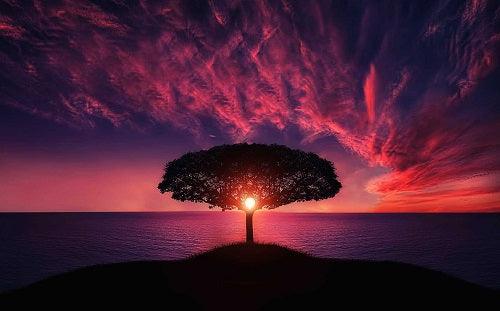
7 Chakras Explained
Top Boho ShopShare
Chakra means "wheel" and it refers to various energy centers in your body that correspond to specific nerve bundles, internal organs, and areas of our energetic body that affect our emotional and physical well-being. The chakra system is an invaluable but surprisingly simple tool for aligning your energy.
There are 7 main chakras, which run vertically from the bottom of your spine to the top of your skull. Each main chakra has a corresponding number, name, color, specific area of the spine from the sacrum to the crown of the head, and health focus.


1. Root Chakra
The root chakra, or Muladhara, is located at the base of your spine. It represents our foundation and gives us the feeling of being grounded. Your root chakra is responsible for your sense of security and stability.
- Color: Red
- Location: Base of Spine
- Symbol: A 4-petalled lotus flower, a square, and a downward-facing triangle. Each element is said to represent the 4 aspects of the human mind, uniting to form the birth of the human consciousness.
- Element: Earth
When this chakra is out of balance, a person can feel unstable, ungrounded, a lack of ambition, fearful, insecure or frustrated. When balanced, you feel stable, confident, balanced, energetic, independent, or strong. Yoga poses that help balance the Root Chakra are Tree Pose (Vrkshasana) and Mountain Pose (Tadasana).

2. Sacral Chakra
The sacral chakra, or Svadhisthana, is located just below your belly button. This chakra is responsible for your basic need for sexuality, as well as your self-worth and creative energy. It is responsible for how you relate to your emotions as well as the emotions of others.
- Color: Orange
- Location: The lower abdomen, about four fingers below the navel.
- Symbol: Multiple circles, a crescent moon, and six lotus flower petals. The circles and crescent moon represent the cyclical nature of life, death, and rebirth, while the 6 petals portray the 6 negative aspects of our nature that we need to overcome to open this chakra.
- Element: Water
Signs of a blocked Sacral Chakra is a feeling of imbalanced, emotionally explosive and irritable, a lack of energy and creativity, feeling manipulative or an obsession with sexual thoughts. When a persons Sacral Chakra is balanced you feel more vibrant, happy, positive, satisfied, compassionate, and intuitive. Yoga poses to activate the Sacral Chakra include the Crow Pose (Kakasana) or standing poses like Triangle Pose (Trikonasana).

3. Solar Plexus Chakra
The solar plexus chakra, or Manipura, is located in your stomach area. It’s responsible for confidence and self-esteem, as well as helping you feel in control of your life. It is characterized by emotions like ego, anger, and aggression.
- Color: Yellow
- Location: At the solar plexus, between the navel and the bottom of the rib cage
- Symbol: A downward-pointing triangle within a ten-petalled lotus flower. The ten petals symbolize ten negative character traits that we have to conquer, while the triangle is the fire of kundalini energy which signifies our inner strength.
- Element: Fire
Physical signs of a blocked or imbalanced Solar Plexus Chakra are digestive issues, liver problems or diabetes, while emotional signs include depression, lack of self esteem, anger or perfectionism. A balanced Solar Plexus Chakra makes us feel energetic, confident, productive and focused. Yoga poses for Solar Plexus Chakra alignment include poses like Classical Forward Bend (Paschimottanasana), Classical Cobra Pose (Bhujangasana), and Bow Pose (Dhanurasana).

4. Heart Chakra
The heart chakra, or Anahata, is located near your heart, in the center of your chest. The heart chakra is all about our ability to love and show compassion. It represents the balance of yin and yang, or upward and downward forces. It is the seat of balance, and is characterized by emotions of love, attachment, compassion, trust, and passion.
- Color: Green
- Location: In the heart region, in the center of your chest.
- Symbol: Two triangles intersect to form a yantra which represents the balance of yin and yang and outside, there is a lotus flower with 12 petals symbolizing the twelve divine qualities associated with the heart.
- Element: Air
When the heart chakra is imbalanced, a person may feel emotional issues like anger, lack of trust, anxiety, jealousy, fear, and moodiness. When the heart chakra is balanced, a person begins to feel more compassionate, caring, optimistic, friendly, and motivated. To balance the Heart Chakra practice yoga poses like Half Bridge Pose (Ardha Setubandhasana), and Fish Pose (Matsyasana).

5. Throat Chakra
The throat chakra, or Vishuddha, is associated with inspiration, healthy expression, faith, and the ability to communicate well. It represents spiritual growth and the purification of the body, mind, and spirit.
- Color: Blue
- Location: At the base of the throat, coinciding with the thyroid gland.
- Symbol: It consists of a 16-petalled lotus flower surrounding an inverted triangle which holds a circle within.
- Element: Space
An unbalanced throat chakra may cause timidity, quietness, a feeling of weakness, or the inability to express our thoughts. When this chakra is balanced, it enables creativity, positive self-expression, constructive communication, and a sense of satisfaction. To balance the Throat Chakra practice yoga poses such as the Shoulderstand (Sarvangasana) and Plough Pose (Halasana).

6. Third Eye Chakra
The third eye or Ajna Chakra (pronounced as ‘Agya Chakra’), is responsible for intuition and is also linked to imagination. This Chakra signifies wisdom, emphasizing it's role in our journey to spiritual awareness. It is often used as a focal point during asana practice to develop more concentration and awareness.
- Color: Indigo
- Location: Between the eyebrows
- Symbol: An inverted triangle resting in a circle between two lotus petals.
- Element: None
When this chakra is imbalanced or blocked you can feel a sense of non-assertiveness or afraid of success or it can make you more egotistical. Physically, an imbalanced third eye chakra can give people headaches, blurry vision or eye strain. When this chakra is balanced we feel more vibrant and confident both spiritually and emotionally. Yoga poses to balance the Third Eye Chakra include practicing Headstand (Shirshasana).

7. Crown Chakra
The Crown Chakra or 'Sahasrara' represents your spiritual connection to yourself, others, and the universe. It also plays a role in your life’s purpose. It symbolizes the rising of divine energy, bringing spiritual liberation and enlightenment. It brings the gift of cosmic consciousness.
- Color: Violet White
- Location: The crown of the head
- Symbol: A ring of a thousand lotus petals surrounding an inverted triangle.
- Element: None
When the crown chakra is imbalanced a person can feel a constant sense ot frustration or sorrow. A balanced Crown Chakra brings inner peace and a clear perspective. Practicing the yoga pose Headstand (Shirshasana) can help balance the Crown Chakra.
Chakras are interrelated, which means when one of them is imbalanced, it can result in a disturbance in the functionality of the other chakras. Although the above yoga poses can help balance your chakras, the best way to unblock chakras will be different for everyone. A few popular techniques to help balance your chakras fully include a well balanced diet, practicing asanas (a deep back-bending pose), breathing techniques, meditation and mudras (hand gestures typically performed in yoga and meditation to focus energy where it's needed most.). It is a matter of trial and error to find the best balance for you.
